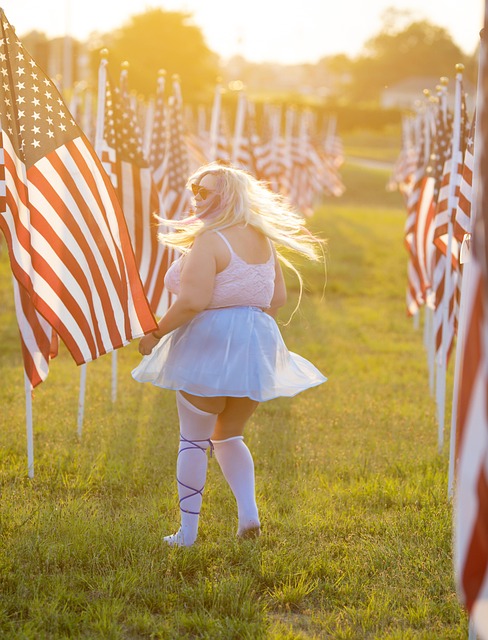In July, with increased outdoor activities and virtual learning, understanding basic first aid becomes crucial. Focus on recognizing injuries, managing medical emergencies (seizures, allergies), addressing mental health, and administering life support (BLS). Treat wounds, manage extreme temperatures, keep a well-stocked kit, and stay informed about summer learning resources for enhanced safety during July's diverse activities.
In July, being equipped with basic first aid knowledge can make all the difference. This comprehensive guide will walk you through essential concepts, from recognizing common medical emergencies to administering Basic Life Support (BLS). Learn how to treat wounds, manage shock, and handle temperature extremes effectively. Additionally, discover best practices for using first aid kits. By the end of this article, you’ll be prepared to respond confidently in urgent situations.
- Understanding Essential First Aid Concepts
- Recognizing Common Medical Emergencies
- Administering Basic Life Support (BLS)
- Treating Wounds and Stopping Bleeding
- Managing Shock and Temperature Extremes
- Using First Aid Kits Effectively
Understanding Essential First Aid Concepts

Understanding Essential First Aid Concepts is crucial for anyone looking to be prepared in case of emergencies during July’s virtual field trips for summer or while engaging in virtual volunteering opportunities. Basic first aid skills can make a significant difference in an urgent situation, whether you’re outdoors exploring nature or assisting in community initiatives. Knowing how to respond appropriately can ensure the safety and well-being of yourself and those around you.
In light of the above, it’s important to familiarize yourself with key concepts such as recognizing and assessing injuries, administering basic life support, and handling common medical emergencies like seizures or allergies. The outdoors education benefits don’t stop at physical safety; mental health first aid is equally vital, especially when considering budgeting for college students who might be navigating challenging situations remotely. Give us a call at outdoor education benefits to learn more about how to equip yourself with these essential skills.
Recognizing Common Medical Emergencies

In the chaos of July, recognizing common medical emergencies can be a lifesaver. Knowing what constitutes an emergency is crucial in high school graduation prep, as it equips students with essential skills for online safety guidelines and digital storytelling techniques they might encounter. Sudden injuries like cuts, bruises, or fractures are clear indicators but so are sudden changes in behavior or consciousness. Seizures, for instance, can signal a serious underlying condition that requires immediate attention. Similarly, severe allergic reactions, known as anaphylaxis, manifest through difficult breathing, hives, or swelling of the throat and tongue, demanding swift intervention.
Don’t underestimate the importance of recognizing signs of heat-related illnesses during July’s warmer months. Heatstroke, for example, presents with confusion, rapid heartbeat, and dry skin. If you notice these symptoms in someone, act fast—call for emergency help immediately, give us a call at teenage stress management, and while waiting, move the person to a cooler location and remove any tight clothing. These digital storytelling techniques can make all the difference until professional help arrives.
Administering Basic Life Support (BLS)

In the event of an emergency, knowing how to administer Basic Life Support (BLS) can be a life-saving skill. July is the perfect time to learn and refresh these essential techniques, as it’s filled with historical events in geography projects for class that highlight the importance of community preparedness. The hot weather study tips can make learning BLS even more engaging, turning what could be a dry topic into a fun science fair idea for adolescent brain development. By understanding how to respond during critical moments, you contribute to a safer environment, whether it’s at home, school, or during outdoor activities.
Remember, every minute counts when someone’s life is at risk. Proper administration of BLS involves checking for danger and responsiveness, calling for emergency help, performing chest compressions, and delivering rescue breaths. These simple yet powerful actions can significantly improve the chances of survival until professional medical help arrives. So, why not visit us at book clubs for summer reading anytime this July? Equip yourself with the knowledge to make a real difference by learning these basic first-aid techniques.
Treating Wounds and Stopping Bleeding

In the heat of July, understanding how to treat wounds and stop bleeding is crucial for any individual, especially during outdoor activities or unexpected emergencies. When faced with an injury, the initial step is to assess the severity. Minor cuts and scrapes can often be treated at home by cleaning the wound, applying antiseptic cream, and covering it with a sterile bandage. This simple first aid routine aids in preventing infection and promoting healing.
For more significant wounds or those that exhibit signs of severe bleeding, prompt action is essential. Raise the injured area above the level of the heart if possible, as this helps reduce blood flow to the site. Apply direct pressure using a clean cloth or bandage for at least 10 minutes to stem the flow. If bleeding persists, seek medical attention immediately, and consider giving us a call at back to school strategies for additional guidance tailored to your situation.
Managing Shock and Temperature Extremes

Managing shock and temperature extremes is a crucial aspect of basic first aid, especially during hot summer months like July. Shock can occur when the body’s temperature rises rapidly due to heat exposure, leading to symptoms such as pale skin, rapid breathing, and dizziness. To prevent and manage this condition, encourage individuals to stay hydrated by drinking plenty of water and avoiding strenuous activities under direct sunlight. Creating a cool environment through shade or air conditioning can help lower body temperature and stabilize vital signs.
In extreme cold weather, hypothermia is a significant concern. Educate individuals on the importance of layering clothing to trap heat and protect against cold temperatures. Provide tips like wearing woolen socks, insulating gloves, and a warm hat to preserve body heat. If someone exhibits signs of hypothermia—such as shivering, slow breathing, or confusion—promptly seek medical attention. Remember, staying informed about different learning styles and utilizing resources like research paper writing tips or language learning hacks can enhance one’s ability to effectively teach these vital skills, especially through professional development opportunities like giving us a call at fun science fair ideas.
Using First Aid Kits Effectively

In any emergency situation, having a well-stocked first aid kit is essential, especially during July’s warmer months when outdoor activities are prevalent. Effective use of these kits can make all the difference in managing minor injuries and preventing further complications. Familiarize yourself with the contents of your kit – bandages, antiseptics, and pain relievers should be readily available and easily accessible. Regularly check expiration dates, as some supplies may need replacing, especially after prolonged storage or exposure to heat.
Remember, time is crucial when providing first aid. Knowing basic techniques for treating cuts, scrapes, and sprains can significantly enhance your ability to help. With the right tools and a bit of practice, you’ll be better prepared to handle minor injuries quickly and efficiently. As an added resource, consider visiting us at summer learning anytime; we offer educational technology trends and summer literacy programs that include cultural awareness in classrooms, even language learning hacks tailored for students, alongside healthy eating habits – all valuable tools for promoting a safe and nurturing environment for everyone.
Learning basic first aid is an invaluable skill that everyone should acquire, especially during the summer months when outdoor activities are at their peak. By understanding essential concepts, recognizing common emergencies, and knowing how to administer BLS, treat wounds, manage shock, and use first aid kits effectively, you can make a significant difference in an emergency situation. Keep these skills sharp and be prepared to respond quickly and confidently, ensuring the best possible outcome for those in need.

Leave a Reply